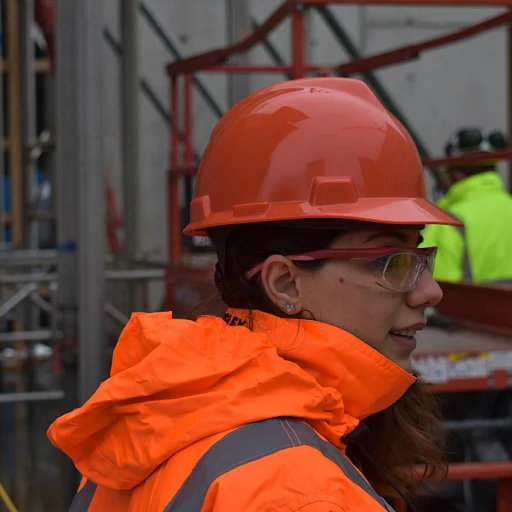
Understanding the Importance of Succession Planning
The Heartbeat of Future Success
Succession planning is like planting seeds for the future of your organization. It’s all about ensuring that when today’s leaders step down, there’s a smooth transition that keeps the business thriving. Think of it as a relay race, where the baton is passed without missing a beat. This process is not just for the big corporations; even small businesses can benefit from having a solid plan in place.
Why It Matters
Imagine a business without a succession plan. It’s like a ship without a captain. Employees might feel uncertain about their future, and the business could face disruptions. By having a succession plan, organizations can identify potential leaders early on and prepare them for critical roles. This preparation is essential for maintaining stability and ensuring long-term success.
Building a Strong Foundation
Effective succession planning involves more than just naming a successor. It’s a continuous process of identifying key positions and grooming potential successors through leadership development and professional development programs. This approach not only fills future leadership roles but also boosts employee morale and retention. Employees feel valued and motivated when they see a clear path for growth within the company.
Real-Life Success Story
Take the example of a mid-sized tech company that faced the sudden departure of its CEO. Because they had a well-thought-out succession plan, they quickly promoted an internal candidate who was already familiar with the company’s culture and goals. This seamless transition not only reassured the employees but also impressed clients and stakeholders, showcasing the company’s resilience and foresight.
Start the Process
Embarking on the journey of succession planning can seem daunting, but it doesn’t have to be. Begin by assessing your organization’s current talent and identifying those with high potential. Engage in open conversations about career aspirations and provide opportunities for leadership development. Remember, the goal is to create a pipeline of talent ready to step into leadership positions when needed.
For more insights on how HR plays a crucial role in shaping the future of succession planning, check out this essential guide.
Identifying Key Roles and Potential Successors
Spotting the Future Leaders
When it comes to succession planning, finding the right people for future leadership roles is like picking the right players for a championship team. You want to make sure you're looking at the right qualities and potential, not just current performance. It's not always about who's doing the best job today, but who can grow into those critical roles tomorrow.
Recognizing the Critical Positions
Start by identifying the roles that are essential for your business's success. These are the positions that, if left unfilled, could cause a major disruption in your operations. Think about the roles that are critical to your business strategy and long-term goals. Once you've got that list, you can start thinking about who might be ready to step into those shoes.
Finding Your High-Potential Employees
Now, let’s talk about your people. Look for employees who show leadership potential and have the drive to take on more responsibility. These are your high-potential employees, the ones who could be the future leaders of your organization. Consider using performance management tools to help identify these individuals. This process isn't just about looking at their current performance, but also their potential for growth.
Developing Your Talent Pool
Once you've identified your potential successors, it's time to think about their development. Leadership development programs and professional development plans can help prepare them for future leadership roles. This isn't just about training; it's about giving them the experiences and opportunities they need to grow. Think of it as investing in your business's future.
Using Best Practices
Effective succession planning involves using best practices to ensure a smooth transition when the time comes. This includes regular reviews of your succession plans and making adjustments as needed. It's important to keep your plans flexible and adaptable to changes in your organization and the business environment.
For more insights on how to ensure your business thrives with succession planning for key roles, check out this guide.
Developing a Comprehensive Succession Strategy
Crafting a Roadmap for Future Success
Creating a comprehensive succession plan is like plotting a course on a map; you need to know where you're headed and what it takes to get there. Identifying high potential individuals for leadership roles doesn't stop with merely picking names out of a hat. It requires a clear-eyed process that aligns with your business goals and professional development plans. Consider focusing on these steps to build a solid succession strategy:- Identify Critical Positions: Every organization has roles that are pivotal. These positions keep the business engine running smoothly. Understanding which are critical helps spotlight where leadership is needed most.
- Spot Potential Successors: Finding the right people isn't always about who stands out today, but who can grow into leadership roles tomorrow. It's important to nurture these talents through development programs and leadership development opportunities.
- Tailor Development Plans: Once potential successors are identified, tailor specific professional development plans to help them acquire the necessary skills, experience, and knowledge to fill those crucial shoes.
- Engage with Performance Management: Integrate the succession plan with an ongoing performance management process. Regular check-ins and evaluations ensure that potential successors are on track and ready to step up when needed.
Overcoming Challenges in Succession Planning
Succession planning is not all smooth sailing. When you think of succession, it's like building a ship, sometimes there are waves, and other times, it's plain sailing.
Acknowledging Hurdles
It's essential to accept that challenges crop up in succession planning. The first one? Resistance to change. Employees often have an uneasy relationship with change. Then there's the fear of loss—the sentiment that accompanies an evolving plan, where employees might feel they're being pushed aside or undervalued.
Another spanner in the works is identifying high potential employees who can be future leaders. Often the best talent isn't immediately visible, and those in management might overlook them due to current performance rather than potential. This is where performance management systems play a significant role, spotlighting future leaders who could fill leadership roles.
Communication is Key
Communication barriers often sidetrack succession initiatives. Transparent and open conversations foster trust and allay fears. Companies need to articulate the benefits of succession processes—this involves outlining roles, potential successors, and specifying the plan's long-term importance. Leadership development isn't just about talking; it's about doing.
Grooming Future Leaders
Effective succession involves developing talent through tailored programs. Development programs rooted in practical and realistic scenarios can fast-track potential talent for critical roles. On-the-job training combined with formal development plans ensures the employees are ready to step into key positions when the time comes.
Streamlining Organizational Processes
Streamlining existing procedures can break down resistance and make succession plans more agile. This may include updating your planning processes, involving cross-department collaboration, and ensuring alignment with the company's long-term goals. Everyone must be on the same page.
Remember that learning from past blunders helps refine your current strategies. Embracing a learning mindset will buffer against future challenges.
Moving Forward
Embodying best practices and staying informed of succession planning trends can never be undervalued. By acknowledging the problems, you're already one step closer to resolving them. After all, the process of succession planning is as much about the journey as it is about the destination—positioning your business for sustained success.
For insights on adapting succession plans amid change, read more about tackling potential hurdles here.
Measuring the Success of Your Succession Plan
Evaluating the Impact of Your Succession Initiatives
Effectively measuring the success of a succession plan involves understanding its impact on your organization. It goes beyond just ticking off checkboxes or adhering to the standard management protocols. It's about observing the influence on your future leaders, your employees, and your business achievements.- Performance Indicators:
- Retention Rates:
- Surveys and Feedback:
- Impact on Business Targets:
Overall success often stems from how well an organization can adapt its succession plans to meet changing business needs, which ties us to aligning with future aspirations. By continuously assessing the various outcomes of your succession efforts, better decisions can be made and honed to match the long term objectives of your organization. Make sure your succession planning is not just a list of names, but a dynamic process in ongoing development and performance management.












